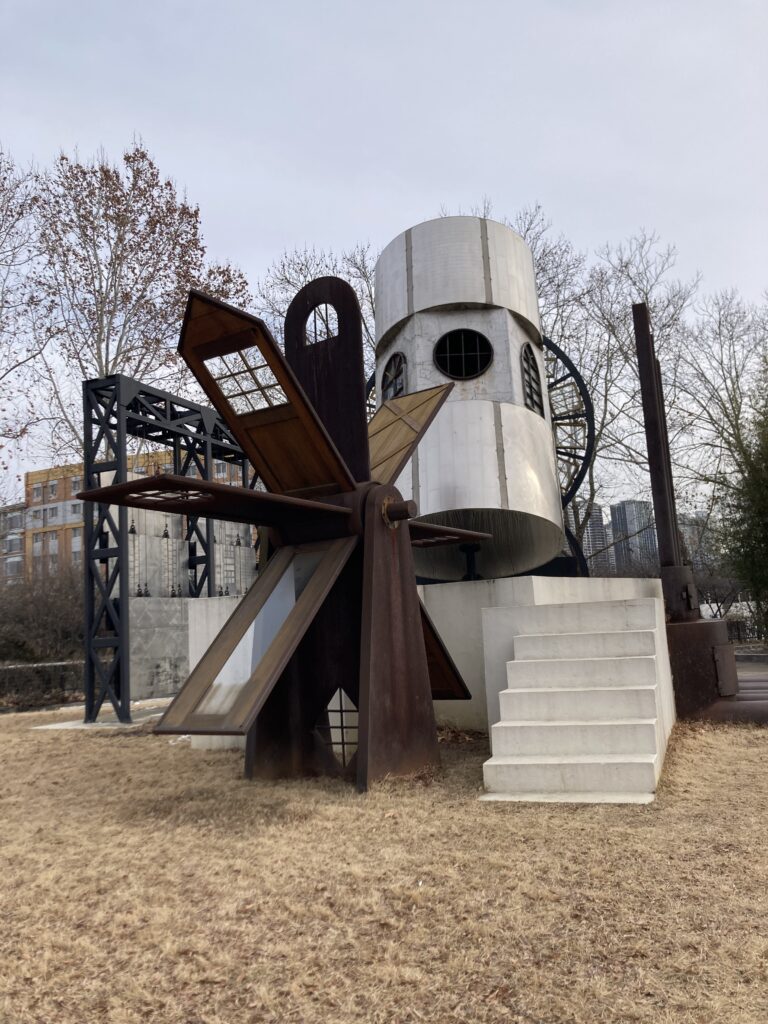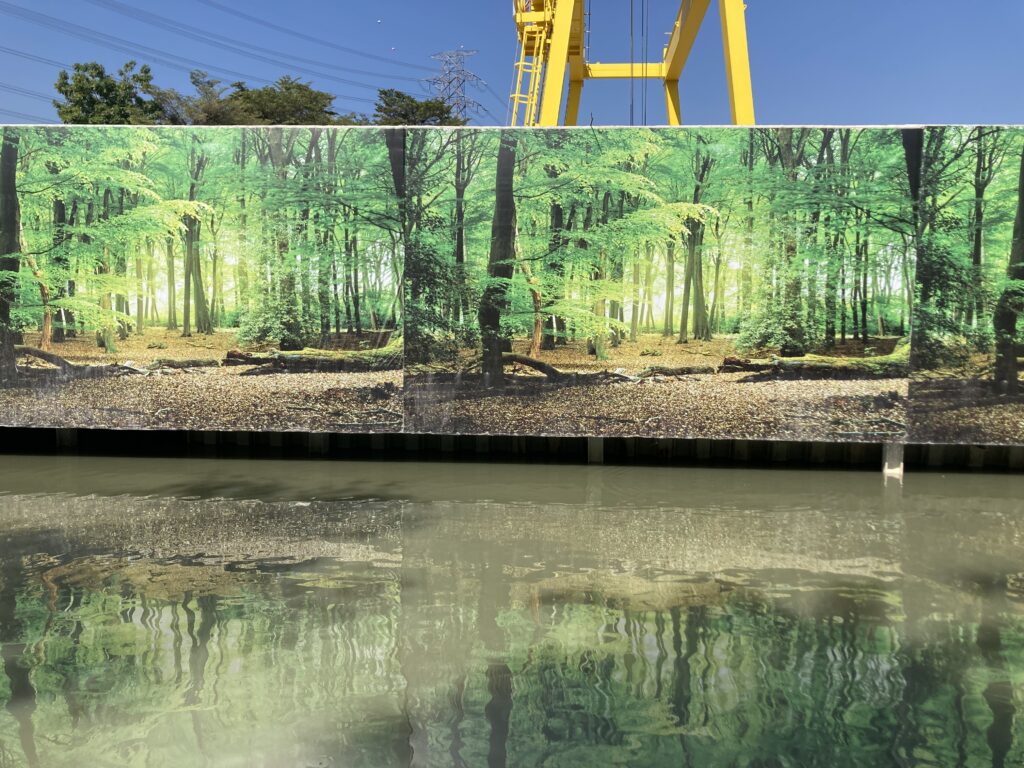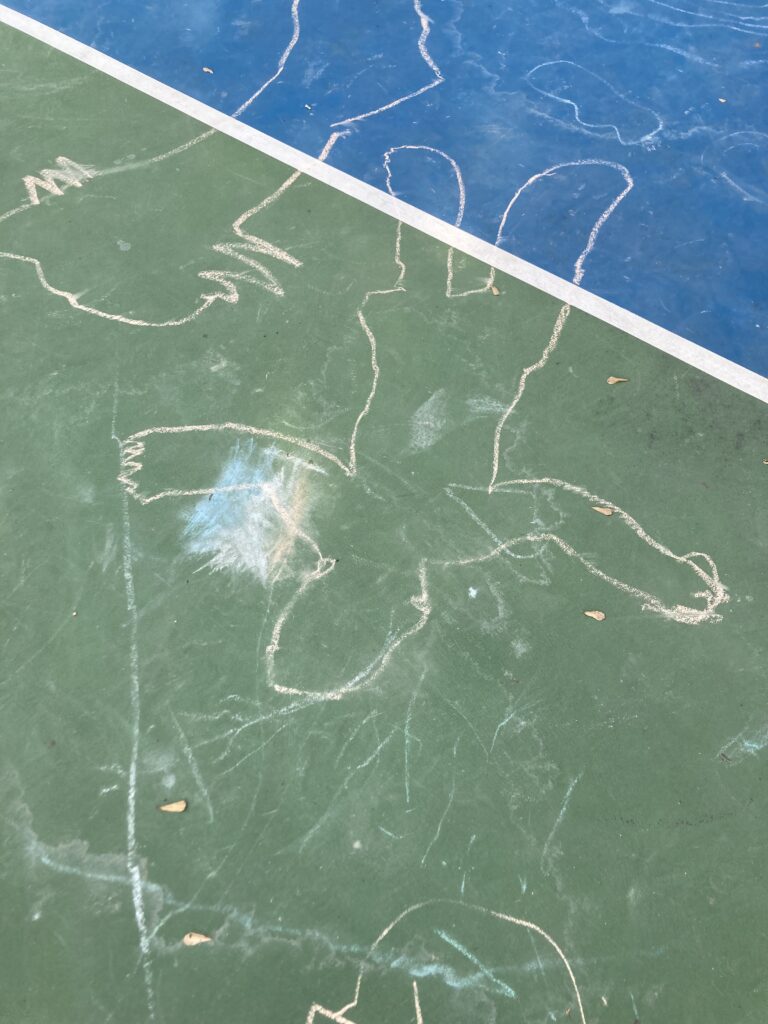‘Previously (and still technically) called ‘Lake Wells,’ ‘Lake Slime’ was, some years ago, infected with a European strain of algae that has absolutely thrived in its new home. This algae has transformed the water into a sort of gel- a slime- that has proven resistant to the (admittedly limited) attempts to eradicate it. The high water-content of the slime makes it resistant to heat and fire. Chemicals tend to slide off the surface of the slime, poisoning the wildlife around it. Actually solving the problem would prove to be complicated and expensive.
And, for the most part, the algae’s damage is done. The fish in the lake died and were pushed to the surface for birds to pick at. The surrounding animals proved willing to, for lack of a better word, chew their water and nature adapted. The only downside proved to be a sharp decline in the recreational value of ‘Lake Wells.’
Then, a video emerged of a local teen running across ‘Lake Slime,’ relying on the slime’s non-Newtonian viscosity. Comments on the video, which soon went viral, pointed out that the depth of the lake reached 20’ at its center and that swimming in the slime would prove difficult or impossible if, say, the same teenager were to trip halfway across. This only exasperated the virality of the video. Copycats proved the stunt could be performed again and then one would-be copycat, a thirty-year old family influencer from several states away, drowned in the exact manner laid out in those early comments.
‘Lake Slime’ is closed to the public but, like the attempted eradication of the slime, those barriers and signs installed to actually keep the public out seem inadequate compared to the situation beyond and the viral pull of possible celebrity.’
Despite the relative fame of ‘Lake Slime,’ its distance from anything else of interest seems to do a better job of keeping visitors away than the waist-high fence and finger-wagging signage that suggests danger past a certain point. Credit should be given to the artist of said signs, however. Given the task of illustrating the theoretical demise of an influencer in a lake of slime with blocky shapes in yellow and black, they have risen to the challenge. A stick man, with a backward baseball cap, screams for help as someone films with their phone from shore. The man’s up to his chest, past the point of saving, I’d guess, even if the audience (here represented by just a phone-in-hand) took up a rope and attempted a rescue.
Which they haven’t.
It’s stupid, to think that crossing the lake is a good idea, but here’s the thing, reader. My sense of what it means to have experienced a destination is vaguely defined, sometimes leaning into the danger of a place and sometimes leaning away. I don’t know until I feel it and, when I arrive at ‘Lake Slime,’ I know, almost right away, that I will have to attempt it myself to feel justified.
It’s not an ideal way to be.
On my side is ample evidence of this being possible. Sure, one man tripped and fell, but there are countless other videos of people heavier than me taking the lake at something like a fast walk- of becoming so confident that they do a few circles in the middle, holding their hands out to either side and grinning at their videographer as if to say, See? This is easy.
They make it look fun, and while I don’t intend to have fun, it seems ridiculous to me that someone could have fun doing something I wouldn’t even attempt due to fear. Not here. Not on the Wayside, where I’ve made my home.
So, I check the laces on my boots- tied, but not so tight that I won’t be able to abandon them to the slime for a second chance at escape if I start to sink. I set my backpack on the shore and stretch, maybe for the first time in my life. I throw a rock out into the middle and watch it sink slowly below the surface, hoping it will make me feel better about what I plan to do (or so poorly that I change my mind). It has neither effect, so I remain in the position of knowing I’m about to do something stupid.
I step back and take the slime at a running start. It bounces underneath my steps, propelling me forward such that I worry I’ll topple, but then I embrace the speed it gives me and my pace stabilizes and suddenly I’m walking on water.
The Wayside can be playful, the way a cat is playful. Willing to show its belly. Happy to bite when it’s finished being stroked. I play, for a while, and I stop when I know it’s time. We’re familiar, now, the Wayside and I. Not friendly, maybe. But familiar.
-traveler





